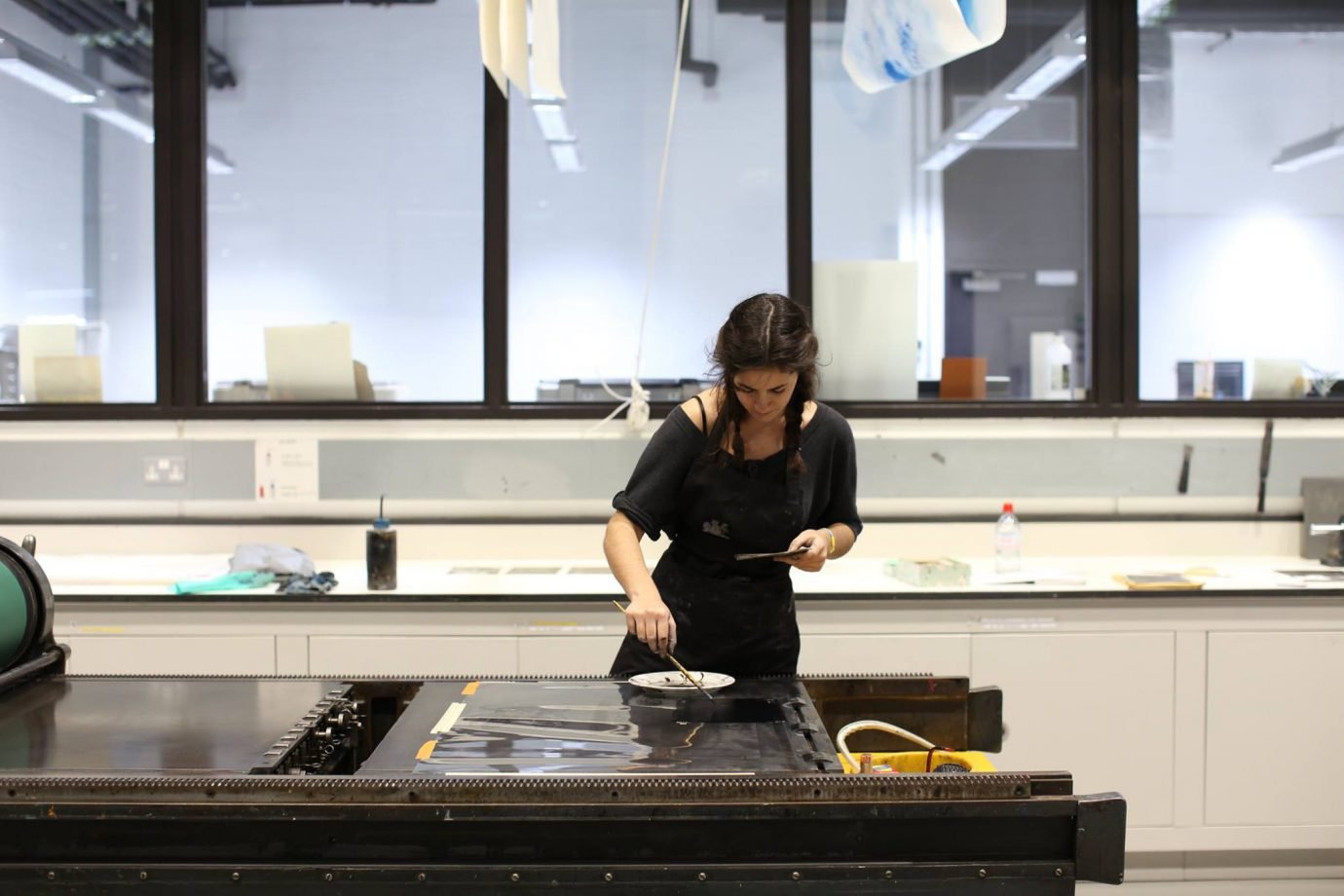Did Karolina Widecka really study fashion at Antwerp or was it just a cover so she could infiltrate the Belgian government as a CIA operative? That’s just the sort of outrageous idea that would catch her attention. “I come from a Polish-Ukrainian family where superstition is very big, so I am interested in the way other cultures see it,” she says. Conspiracy theories, hoaxes, and the occult inform Widecka’s work: womenswear for the era of alternative facts. Born in Piechowice, Poland and raised in Mönchengladbach, Germany, she creates from a transnational perspective particularly attuned to the Americas.
Karolina Widecka and design by conspiracy theory
Her MA collection, ‘Where’s the Curve?’, focuses on conspiracy theories and the paranoia they provoke
“I felt pressure from teachers who thought maybe it’s a bit too weird of a topic.”
Entitled ‘Where’s the Curve?’, her MA collection focuses on conspiracy theories and the paranoia they provoke. It felt like a strange theme to pursue. “I felt pressure from teachers who thought maybe it’s a bit too weird of a topic.” Would the fashion industry take her seriously as a designer for creating around the patently false? “I didn’t want to seem crazy,” she says, insisting that despite her soft spot for conspiracy theories, she doesn’t believe in them.
“Conspiracy theories are not very visual, they’re more abstract concepts.”
Once she landed on her topic, she struggled to start researching. “Conspiracy theories are not very visual, they’re more abstract concepts,” she says. At first she envisioned making a collection that was itself a conspiracy, perhaps a metacritique of the fashion industry’s public duplicity. “But it was too conceptual,” she decided, both for her and for Antwerp. So she racked her memory and trawled the internet for other ideas. Within the mythos around extraterrestrials she discovered the Men in Black conspiracy, which contends that the government conceals UFO sightings by sending bureaucratic agents to intimidate all alien-spotters into silence. “Immediately, I thought of office-wear as how to translate that,” she says.
Graphic prints also seemed a logical way to visualize conspiracy theories. Through her research she discovered the artist Dan Tague, who precisely crumples dollar bills so their visible letters spell out American aphorisms like ‘Don’t Tread on Me’ and ‘Pursuit of Happiness.’ Tague’s work dovetails with the conspiracy theory that a change to the twenty-dollar bill design in the nineties predicted 9/11 because you can fold up that bill to create an image that looks like the Twin Towers with a plume of smoke. Widecka interpreted Tague’s work by folding dollar bills into her sketches which then translated into the collection as a draped top and a pleated skirt.
Perhaps the most literal reference in her collection, the ‘Ever Dream This Man?’ poster, adorns a t-shirt and a dress. The graphic propagandized the ‘This Man’ conspiracy theory. “It’s the idea that every night thousands of people around the world simultaneously have this guy appear in their dreams,” she explains. She discovered ‘This Man’ about a decade ago in Germany. “I would see it on posters all around the city, so it had already caught my attention back then. I was always creeped out by this image.” The poster became relevant to her research when she realized it had a theological connotation to some believers. “There’s a theory that maybe he’s the personification of God. I thought that was interesting.” And so the poster became a print.
These vivid graphics materialize in the collection alongside a wide range of fabric thicknesses spanning delicate mesh to tough leather. She also incorporated some unorthodox materials, for example, she reinforced the crispness of her dollar-bill top with a metal foil backing typically used in the theatre. It challenged her to interrelate materials with conflicting properties, but the pattern-cutting experience she’d developed as an intern at Haider Ackermann came in handy, she says.
Widecka accessorized the collection with sunglasses she created in collaboration with Belgian eyewear label KOMONO after winning a competition at school. Inspired by the evil eye and Mexican ex-voto paintings, her design considers how a pair of sunglasses could invite and ward off danger all at once – a malfunctioning talisman. “They become a symbol of survival or an accident.”
Despite her deep research investment in the occult, she feels fortune was in her favor when the pandemic hit. Even in her final year of school, Widecka worked full-time at a restaurant to financially support her studies. When the lockdown started, she continued to get paid, leaving her with both the time and resources she desperately needed to finish the collection. “It was perfect,” she says. And she commends how her school created innovative virtual exhibition opportunities like the green-screened Ghost Show which helped deliver the motto of her work: “Don’t believe everything you see.”
“I’m craving the corporate life.”
Having finished the collection, she faces a paranoia of her own: did she really deliver the concept to its full potential? “I was a bit scared to present some ideas because I thought maybe they were ridiculous,” she says. “I don’t think I pushed it far enough. If I could get a chance I would love to work on the same topic but push it further, work it through more.” But for now, Widecka mostly wants to join an established fashion house, either in design or management. “I’m craving the corporate life.”




































































